In this fascinating plant science experiment, your kids will learn what happens when you put pine cones in water and why pine cones open and close their scales.
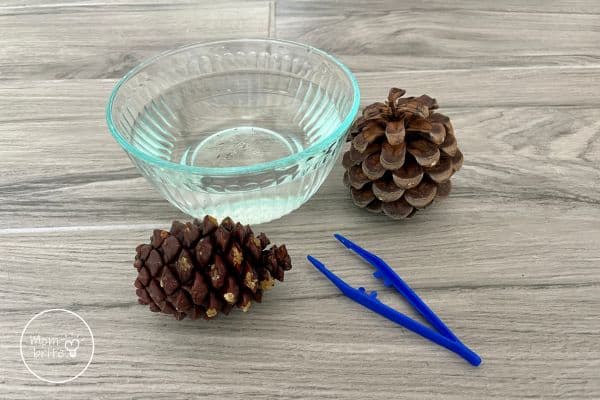
Kids love to collect pine cones, and I don’t blame them! There’s something magical about the way they fall from the trees and litter the ground below. With their unique shapes and textures, pine cones are fascinating to explore and collect.
Chances are you have done at least a few eco-friendly craft projects and activities with pine cones, such as creating a pine cone turkey for Thanksgiving or a pine cone snowy owl for the winter. But have you ever tried putting a pine cone in water?
In this fun and easy pine cone science experiment, your kids will explore plant biology and the unique adaptations that plants have developed to thrive in their environments. So let’s discover together what happens when you place a pine cone in water. The answer may surprise you!
Pine Cones in Water Experiment
There are probably tons of pine cones on the ground in the fall, which makes this experiment a great fall activity for kids. I encourage you to take a nature walk with your kids and collect the pine cones for this pine cone science experiment.
However, if you can’t find any pine cones on the ground because it’s not the right time of the year or because you don’t have pine trees in your area, you can head to the store to purchase some pine cones. Just make sure you don’t get painted ones – natural ones like this one will do.
Materials:
- Pine cones
- Bowl or container
- Hot water
- Cold water (or water with ice)
- Tweezers or tongs
Instructions:
1. Observe the dry pine cones closely. I recommend taking a picture of the pine cones so you can use it to compare them to the wet pine cones after we put them in water.
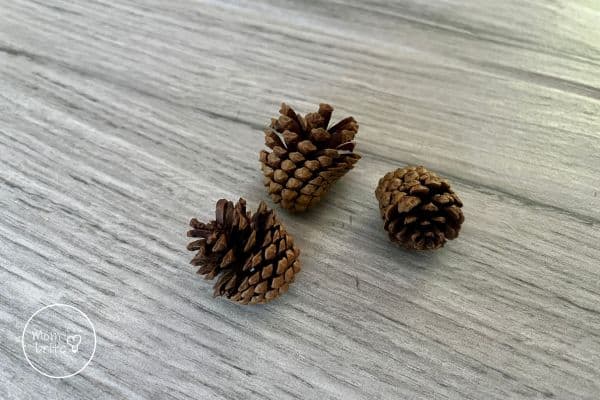
2. Fill a bowl or container with hot water. Be careful not to burn your hands! Place a pine cone in hot water.
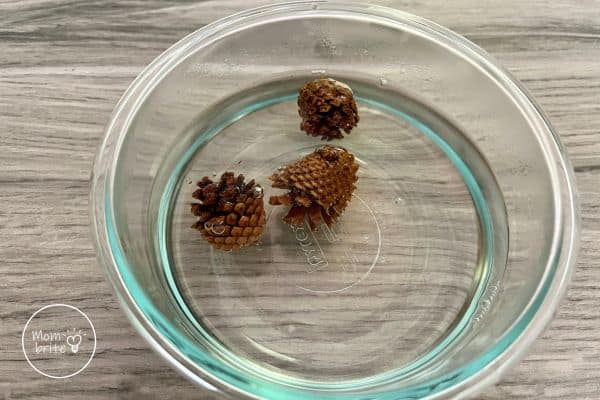
The first thing my kids noticed was that the pine cones floated in the water, and there were lots of air bubbles coming out of the pine cones. Here is a close-up:
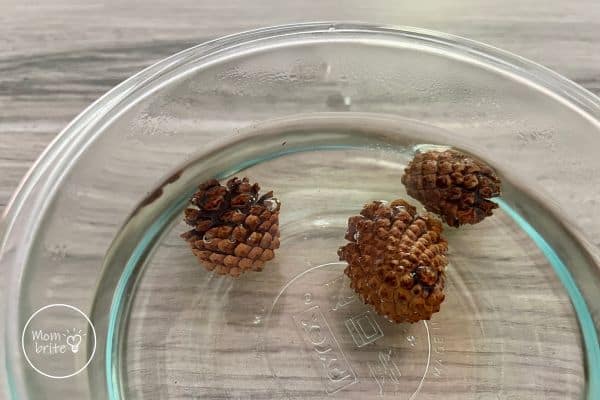
There was a slight visible difference after about 5 minutes. You can start to see the scales closing up, but very slowly. We left the pine cones in hot water while we went to class. What a big surprise when we returned!
3. After a couple of hours, the pine cones have all closed up! Take them out of the water and observe them closely.
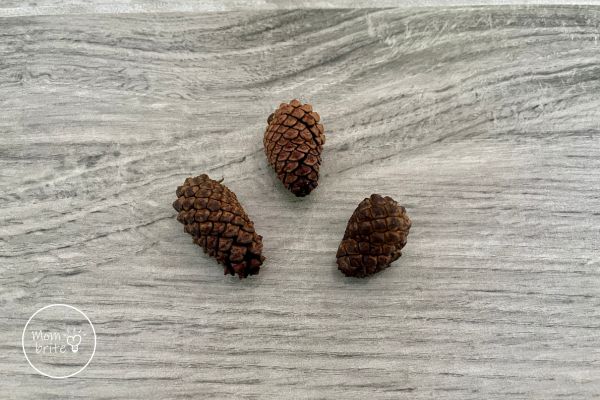
4. Pat the pine cones dry with a paper towel and place them on a sunny spot to dry. It will take at least a day for the pine cones to open up again. This is what our pine cones look like after two days in the sun:
5. After the pine cones have dried, we are going to experiment if the temperature of the water matters. Take the dry pine cones and place them in cold water. You can either place a bowl of water in the refrigerator and let the water cool overnight, or simply place a few ice cubes in the water to cool it down.
Place the same 3 pine cones in the cold water. What do you observe?
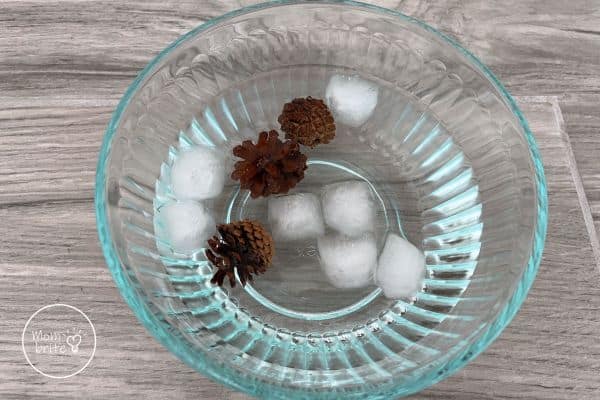
Unlike what we saw with hot water, the pine cones in cold water didn’t really have any visible change after 5-10 minutes. We decided to leave them for a few hours to allow the pine cone scales to react to the moisture.
6. As expected, the pine cones closed up in cold water as well!
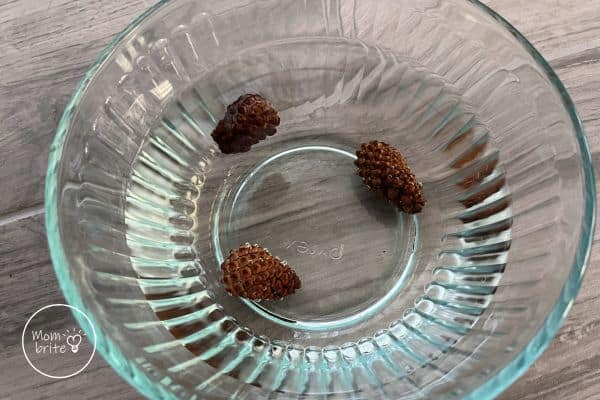
We had some giant pine cones sitting around, and the kids wanted to see if the big pine cones would react the same way to moisture as the small pine cones. Therefore, we repeated the entire experiment with the big pine cones.
The results were the same – the pine cones closed up in both hot water and cold water!
Since we used natural pine cones that we found in the forest of Arizona, the pine cones had not been washed. Therefore, the hot water drew out all the dirt and debris, leaving the water murky. You can even see some insect wings in the water!
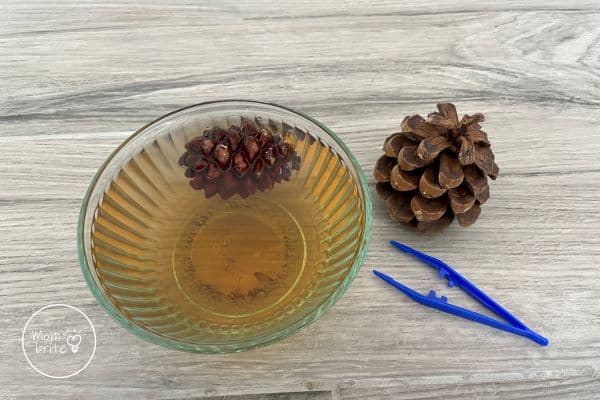
We also tested out what happens to pine cones in cold water. Similar to the smaller pine cones, this giant one closed up after a few hours. The water is not as gross as the hot water though!
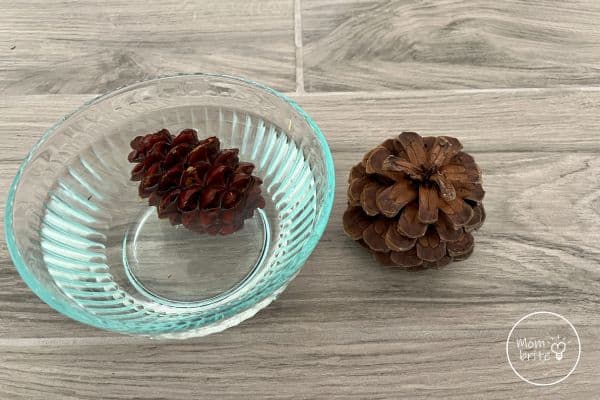
Why Do Pine Cones Open and Close
This ability of pine cones to open and close in response to changes in humidity helps ensure that the seeds are dispersed at the right time for optimal growth and survival.
In dry weather, the scales that make up the pine cone loosen and spread outward. This allows the pine cone to open up and disperse seeds.
Pine cones have a variety of mechanisms for seed dispersal. Some pine cones rely on the wind to carry the seeds away from the parent tree. Others have adaptations such as wings or hooks on the seeds to help them travel farther. Some pine cones also have specialized structures, such as the bracts that make up the “pineapple” of a sugar pine cone, that aid in seed dispersal.
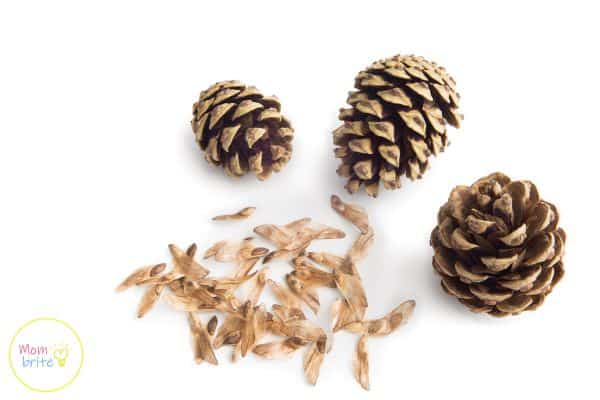
When it’s humid, pine cones close up their scales, sealing their seeds inside and protecting them from excess moisture, which can lead to fungal growth and other problems that can harm the seed’s viability.
Scales of a pine cone are held together by a small structure called the umbo, which acts like a pivot point. When the pine cone is exposed to high humidity or moisture, the scales absorb water and expand, which causes the umbo to move and the scales to close tightly together.
YOU MAY LIKE:
